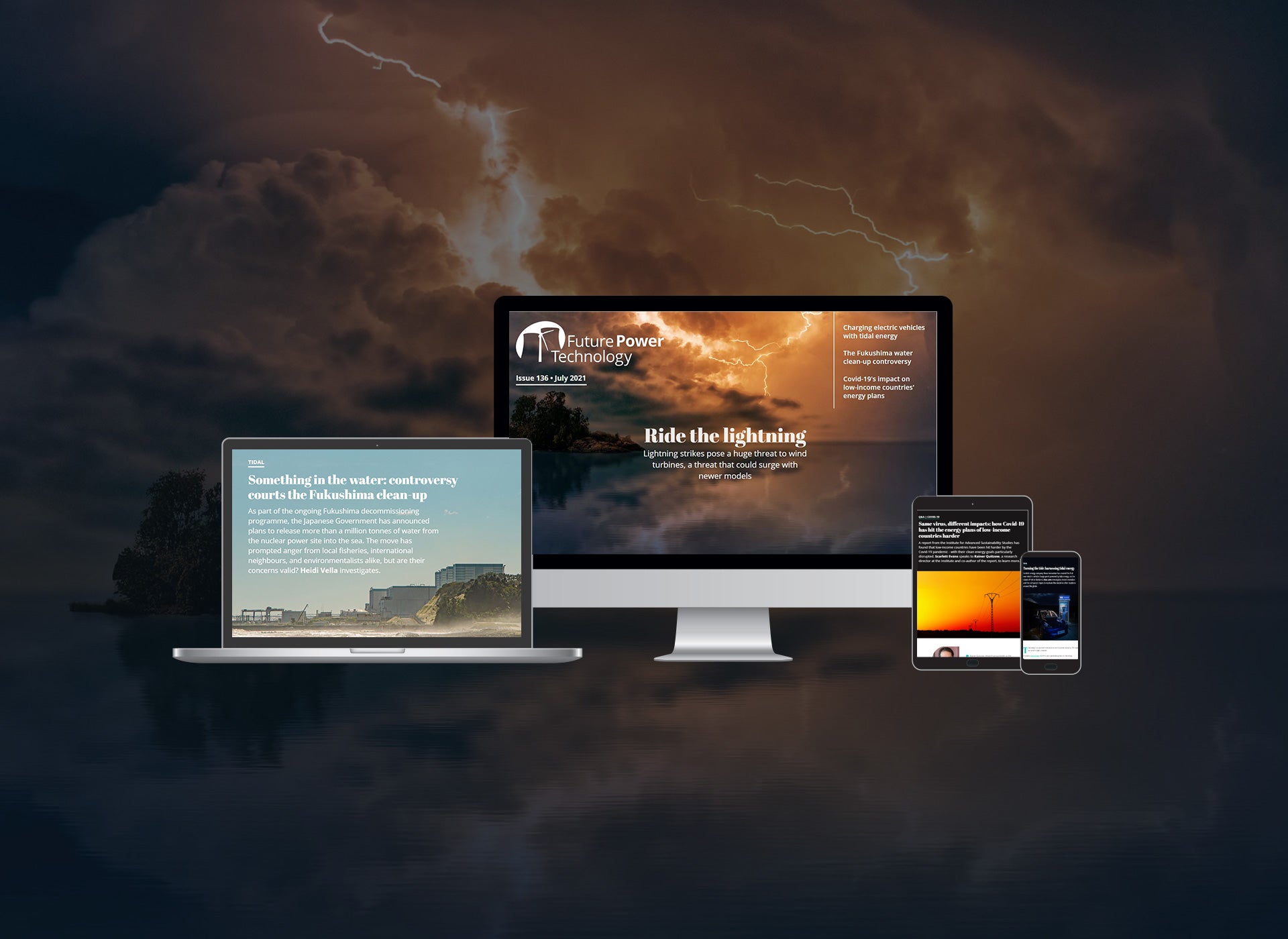
In this issue, the first half of 2020 saw lightning strike Vestas for €135m of costs. The company claimed that a ‘limited number of models’ were to blame for the high incidence of lightning, and that it would work on a turbine-by-turbine basis to correct problems. If lightning strikes, what sort of issues can it cause for wind turbines? We look at the problems Vestas had, what can be done to protect turbines, and how attractive big metal sticks in the middle of the ocean actually are to massive bodies of statically charged water.
Also, Japan has announced plans to release more than a million tonnes of “treated” water from the Fukushima nuclear power plant into the sea as part of decommissioning elements. With the move prompting anger from regional neighbours and environmentalists alike, we dive into the decision and what it may tell us about dealing with nuclear accidents.
Lastly, the disproportionate impacts of the Covid-19 pandemic are well-documented, and this extends to the energy sector. A report from the IASS has found that low-income countries have been hit harder by the pandemic, with their clean energy goals particularly disrupted, and that they will require additional financial support to transition away from fossil fuels. We speak to the institute to learn more about the challenges facing low-income countries post-Covid.
Whether you are on a desktop, tablet or smartphone, you can read the magazine for free online, and join the conversation on Twitter.

In this issue
When lightning strikes: managing impacts on wind turbines
When wind turbine manufacturer Vestas made a huge payout to repair and upgrade turbines against lightning strikes last year, it highlighted the scale of the threat the natural phenomena pose. Matt Farmer speaks to experts to find out more about the problem, which they say new models could worsen.

Turning the tide: harnessing tidal energy
Scottish energy company Nova Innovation has created the first ever electric vehicle charge point powered by tidal energy, on the island of Yell in Shetland. Alex Love investigates Nova’s evolution and the company’s hopes to replicate the model in other locations around the globe.

Could the UK’s renewables capacity cope with a boom in hydrogen vehicles?
Switching to hydrogen trucks, buses, and cars in the UK may require 2,000 more wind turbines than if battery vehicles were prioritised. Julian Turner talks to the UK Hydrogen and Fuel Cell Association about what an expansion of hydrogen vehicles could mean for renewables capacity.

Making blue from RED – the potential of salinity gradient power
Harnessing the power of the oceans for energy has long been a possibility, albeit on a smaller scale than we’d have hoped for so far. The next revolution might be at hand though – salinity gradient power. Andrew Tunnicliffe learns about what it is, how it might be used, and if it can overcome the challenges it faces.

Something in the water: controversy courts the Fukushima clean-up
As part of the ongoing Fukushima decommissioning programme, the Japanese Government has announced plans to release more than a million tonnes of water from the nuclear power site into the sea. The move has prompted anger from local fisheries, international neighbours, and environmentalists alike, but are their concerns valid? Heidi Vella investigates.

Same virus, different impacts: how Covid-19 has hit the energy plans of low-income countries harder
A report from the Institute for Advanced Sustainability Studies has found that low-income countries have been hit harder by the Covid-19 pandemic – with their clean energy goals particularly disrupted. Scarlett Evans speaks to Rainer Quitzow, a research director at the Institute and co-author of the report, to learn more.

Preview – Future Power Technology August 2021
Barcelona is trialling Spain’s first photovoltaic pavement as part of the city’s carbon-neutral initiatives, with an evaluation of the system over six months to assess the potential of rolling solar pavements out across the city. The company providing the solar paving is Platio Solar, which touts the durability, efficacy, and simplicity of its system as an effective proposition for helping cities go green.
Also next issue, we investigate how Saudi Arabia’s investments in solar power could have geopolitical implications and consider what the standards for clean power should be.
Plus, we look at how renewable power can be incorporated into planned cities, hear from Carbon Neutral Energy about its new energy storage solution, and dive into Synhelion and Wood’s partnership to develop solar fuel.



